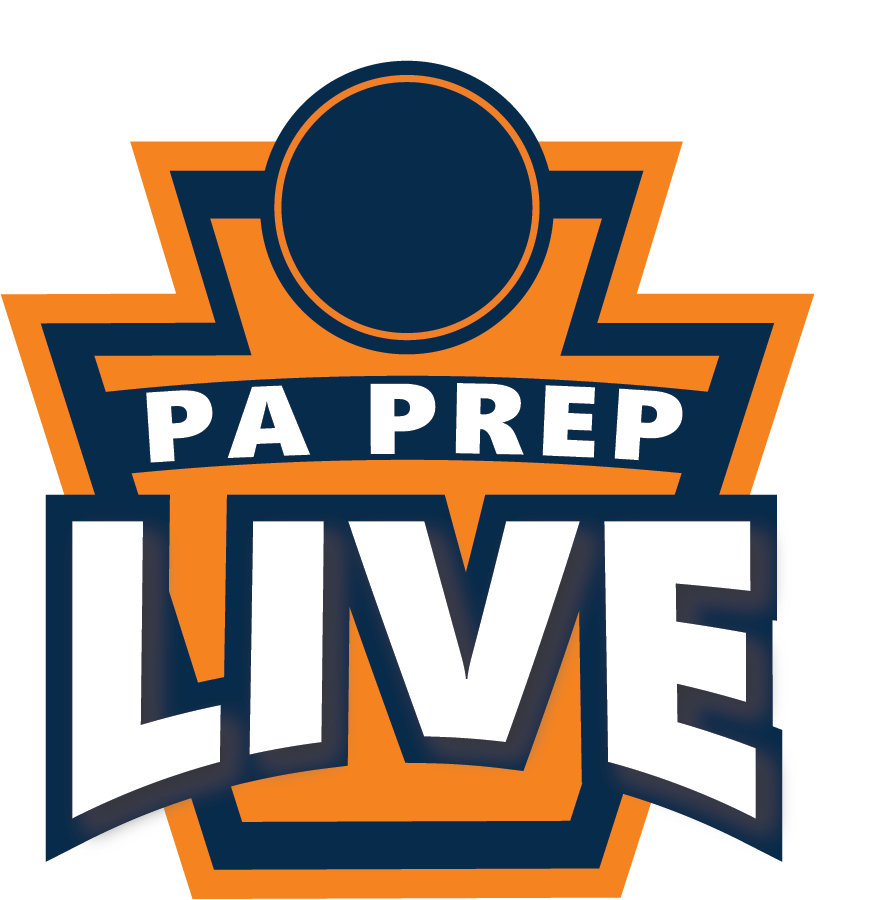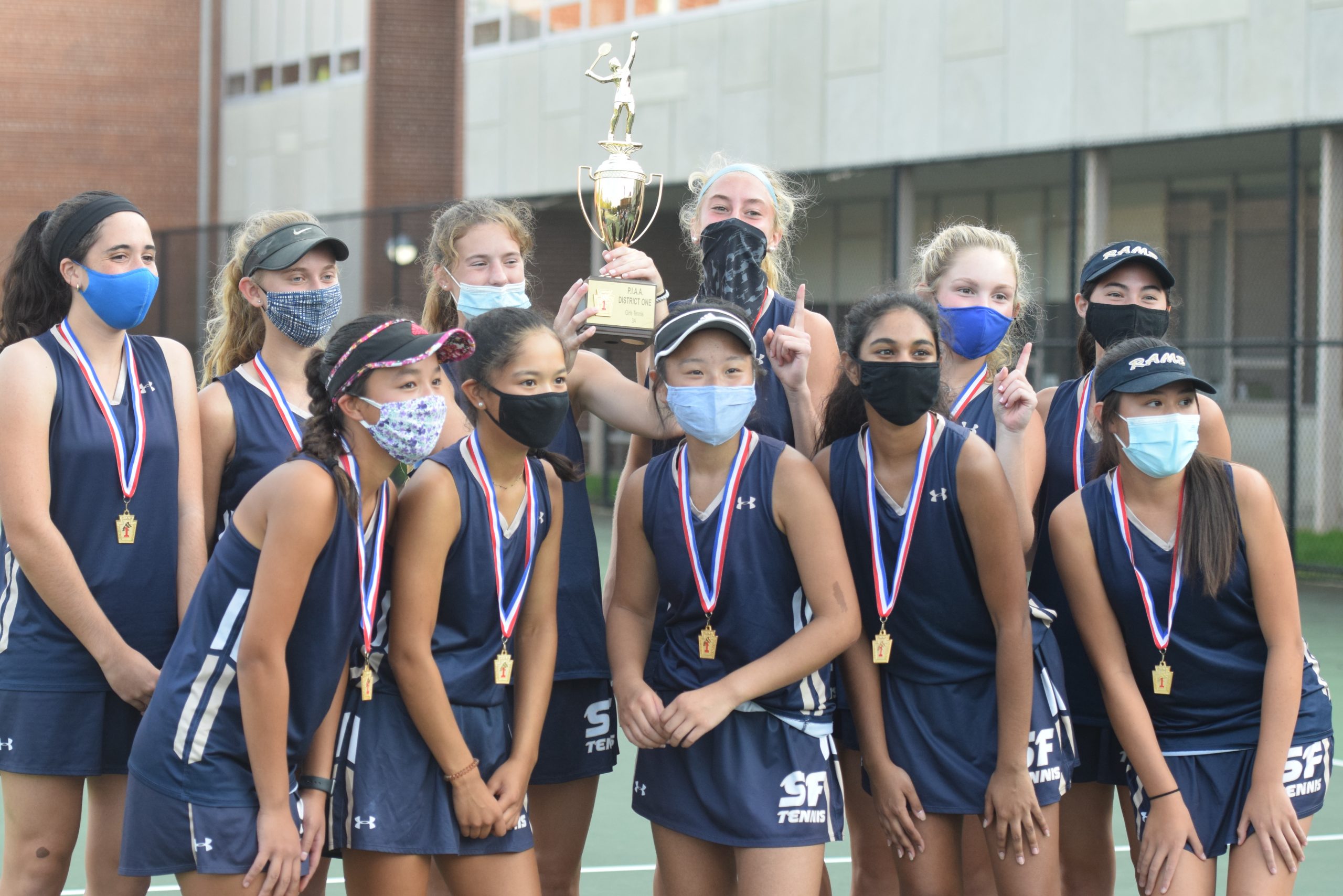
New School Approach: Student-athletes navigate unusual school life amid pandemic play
There was no traditional student-athlete experience in the Mercury-area this fall.
Like seemingly everything during the COVID-19 pandemic, there was nothing standard about the 2020 Pioneer Athletic Conference sports season as schools and student-athletes were on different timelines, schedules and learning plans.
Seven PAC schools started their seasons on Sept. 25, when Boyertown, Methacton, Owen J. Roberts, Perkiomen Valley, Pottsgrove (with the exception of football), Spring-Ford and Upper Perkiomen began league play in boys and girls golf, girls tennis, cross country, football, boys and girls soccer and field hockey and girls volleyball.
Boyertown began its school year with hybrid in-person and virtual learning; Owen J. Roberts and Perkiomen Valley shifted from all virtual learning to hybrid learning during their seasons; and Methacton, Pottsgrove, Spring-Ford and Upper Perkiomen remained all virtual throughout the fall sports seasons.
“It was nice to almost have a relief after school because being cooped up in your house for seven hours is a lot mentally,” Pottsgrove girls volleyball player Sydney Mowery said. “It’s very draining, so some days after school going to practice we might be really tired after sitting a whole day in front of the computer. But I think everyone was happy to get out and do something.”
The rest of the PAC was joined by almost all of their usual peers later in the season with a total of 11 schools — the exception being Norristown — returning to competition by mid-to-late October.
Pope John Paul II approved a return to sports while keeping its students in a hybrid learning model. Upper Merion and Pottstown’s athletic programs made full returns with their students learning completely virtually.
“I think it was a little difficult because our season was so short and we had to crunch everything into a two-week period,” PJP senior girls volleyball player Jessica Donovan said.
Phoenixville, which began golf and singles tennis in September with the other schools, allowed its other teams to return to competition right around the time it began a hybrid learning model of its own.
Phantoms football players were allowed to return to the field if they remained in virtual learning throughout their seasons.
“Not at all. It was actually one of the easiest,” Phoenixville football player Nolan Martin said on whether the decision to stay in virtual learning was difficult. “I’m fine with staying online if it means a chance to play high school football again. Especially with my brothers, I’ll sacrifice anything to play at least one more down with them.”
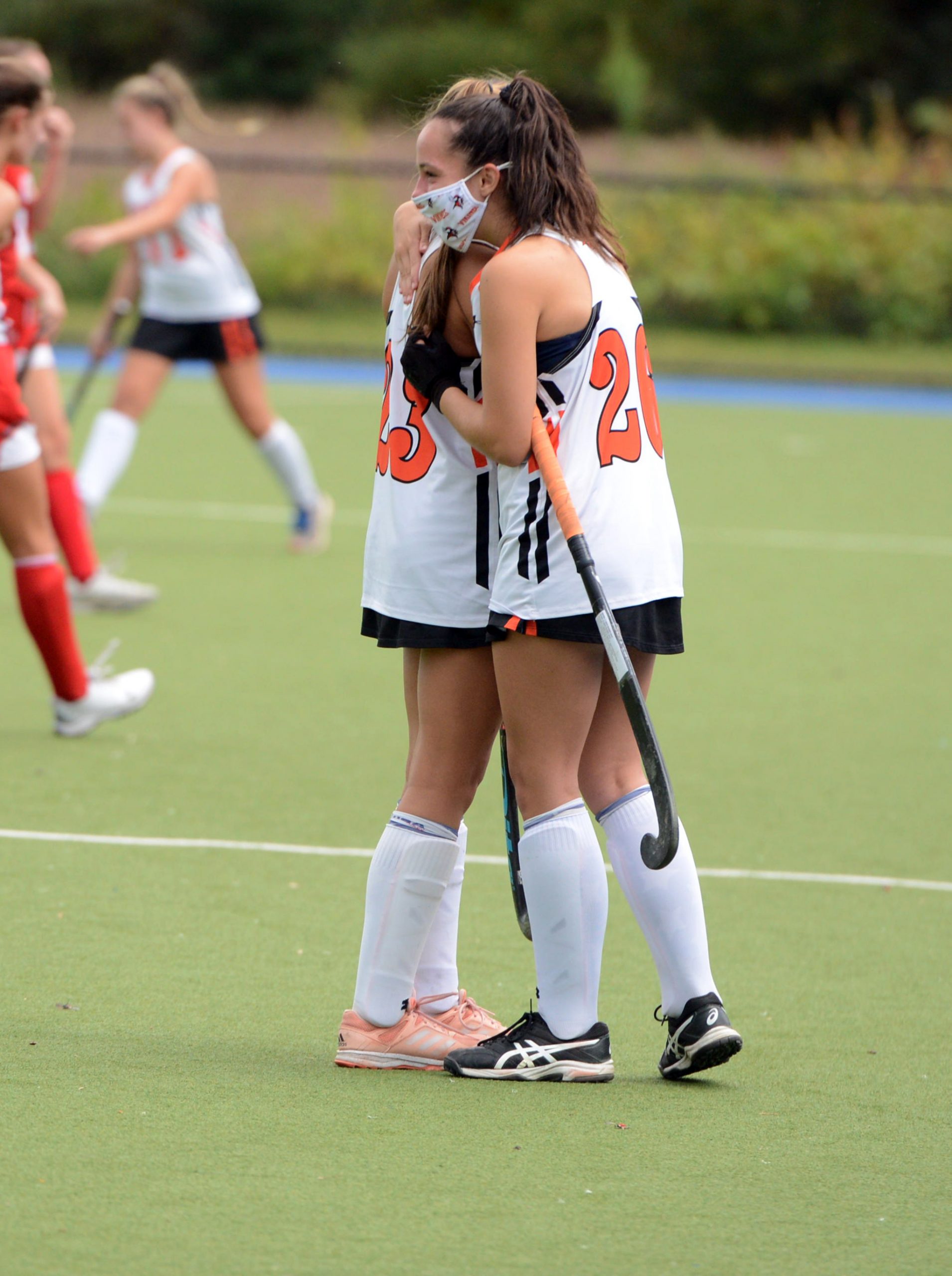
Everyday Routine
Athletes around the area adjusted to their new learning methods and schedules differently throughout the season.
Without in-person learning to break up their schedule, those student-athletes in virtual learning had more time to perfect their online learning routines.
Martin said he tried to wake up at around 5 or 6 a.m. on weekdays to get some schoolwork done before online classes from 8 a.m.-3 p.m and practice around 4 p.m.
Methacton boys soccer player Zach Stevenson said he didn’t leave his room much during the online school day before heading to practice for about two hours then returning back to his room to finish his school work.
“Every day, I was really just sitting alone in my room. I would get up after not moving my legs for hours on end and getting up and going to practice,” Stevenson said. “I’m just glad I finally got to see people after so long of just sitting alone because most of my classes are just everybody’s muted listening to a teacher.”
Owen J. Roberts senior field hockey player Raina Smolij spent her Mondays and Tuesdays in virtual learning and roamed the halls like usual — albeit without half of her classmates — on Thursdays and Fridays. On Wednesdays, OJR students had off with an opportunity to catch up with work and/or meet with teachers for office hours.
Smolij said a typical day from home consisted of catching a little bit of extra sleep before getting prepared for school like normal and heading downstairs in her ‘comfy clothes’ to hop on her computer. Online periods were consistent with the schedule for an in-person school day.
“During lunch I tried to stay off my phone or computer just so I could give my brain a break from staring at the computer,” Smolij said.
The hybrid schedule was similar for Pope John Paul II senior girls volleyball player Isabella Ricevuto. PJP’s students were broken into blue and gold cohorts with each group coming in two designated days per week and every other Wednesday.
Ricevuto said not much was different from her days in school and out. She dressed in her school polo for class and sat in on classes on her computer from 7:50 a.m. to 2:25 p.m. with 10-minute breaks between periods. At the school some subtle differences included one-direction hallways and half-empty classrooms.
Even though she shared classes with some of her teammates, Ricevuto said they weren’t always in the same place. They still made a point to stay in touch throughout the school day.
“I do have certain classes online with people,” Ricevuto said. “Like I have an anatomy class with Lexi McMonagle and I have English with Hanna Tulli. When we’re in school, Lexi’s on the opposite day as me, so it’s really hard, but throughout the day in that class I’ll make sure to send her a text. With Hanna, I almost FaceTime her everyday in that class.”
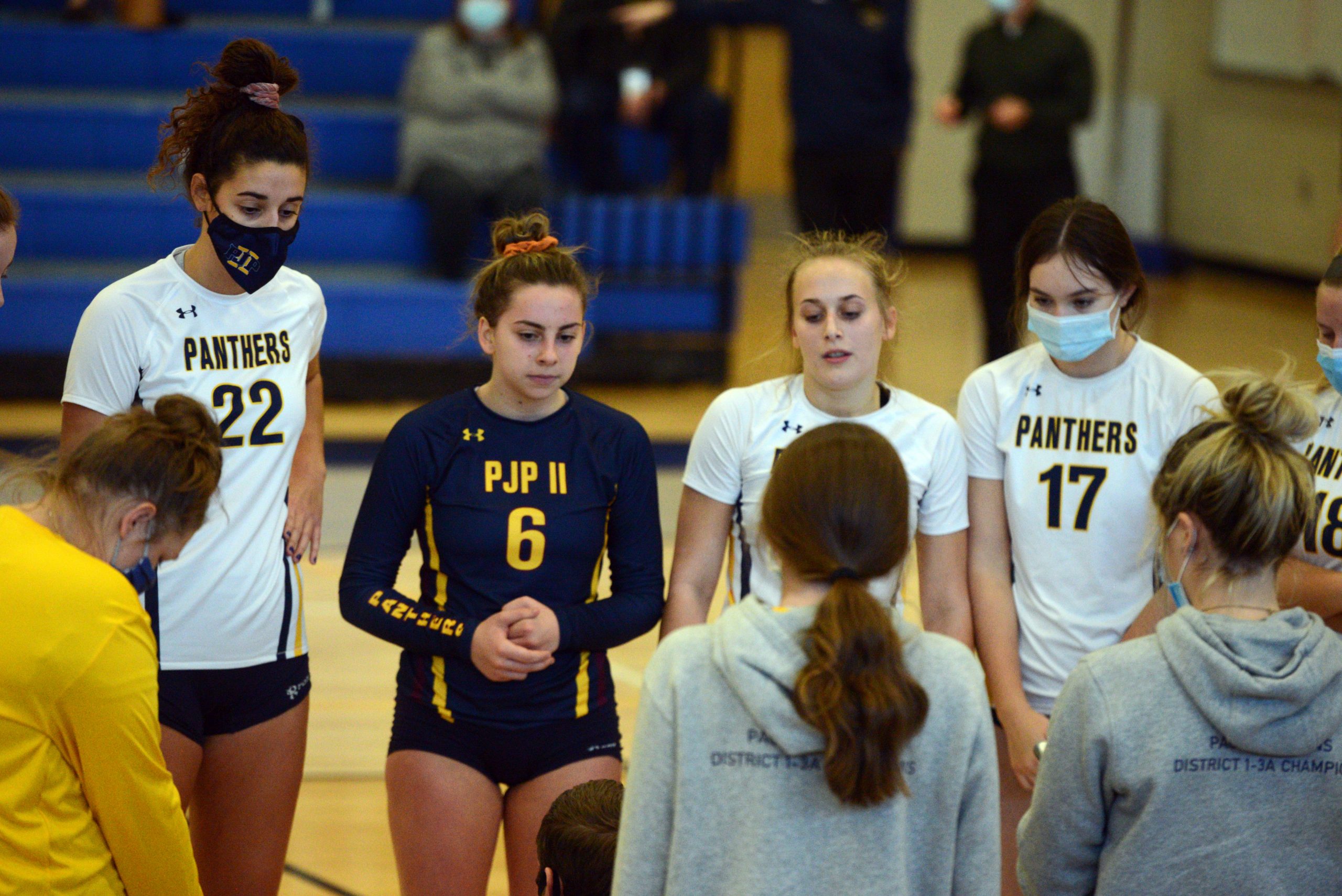
Practices and Games
Despite the reprieve sports played in giving student-athletes a taste of ‘normal,’ things were still different even when they arrived at the athletic fields everyday this fall.
Regulations were slightly varied from school-to-school. Common safety measures included required mask use for players upon arrival and departure, and questionnaires and temperature checks before games and practices, requiring players and coaches to get to the field early.
During games and practices, players were encouraged to keep their distance from each other, which proved more difficult sometimes more than others.
“Especially in the beginning,” Ricevuto said, “it was really hard for us when we were on the bleachers or when we were on the bench to stay apart with our masks on because we are so team oriented and love to help each other. It just made it a little more difficult.”
“It was a little weird because I didn’t get to see my coach’s face,” Donovan said, noting PJP head coach Ryan Sell wore a mask during games and practices throughout the entire season.
Other adjustments included a locker room that was either off limits or limited to a quick in-and-out trip.
“We definitely are missing the in-school interactions with our teammates and the locker room too,” Phoenixville senior football player Max Strunk said.
“Definitely the (locker room) interactions. With COVID going on it’s kind of in and out,” Strunk’s teammate Kris Grinstead said of what was missing this season.
Along with following new guidelines, gearing up for games and practices also provided some challenges compared to years past, particularly after a day of online learning at home.
Players said showing up early to practices and games to be around teammates helped generate some energy before they got onto the field.
“Before practice or games we’re supposed to be there an hour earlier, but some of us get there especially early because we’re so antsy about the game and want to be there,” Spring-Ford girls soccer player Emily Higgins said. “We’re sitting in front of the computer eight hours a day so we just want to get out there and be with our teammates and play for each other.”
Smolij said the Wildcats used music to try and pump themselves up when they got to practices and games. Making sure everyone was mentally prepared became an important role for Smolij and the team’s other leaders this fall.
“I think the people who are at home, I think it’s hard because you don’t get to be around anyone,” Smolij said. “You’re kind of by yourself doing your own thing. At school, maybe you get to see other people in the hallway and I always feel more tired before a practice or a game when I’ve been home all day. I kind of feel burned out.”
“We try and make sure everyone’s in it and not just going through the motions,” she added. “As seniors that was a big thing for us. We had to make sure everyone was in a good mood and trying to get everyone hyped up for the game.
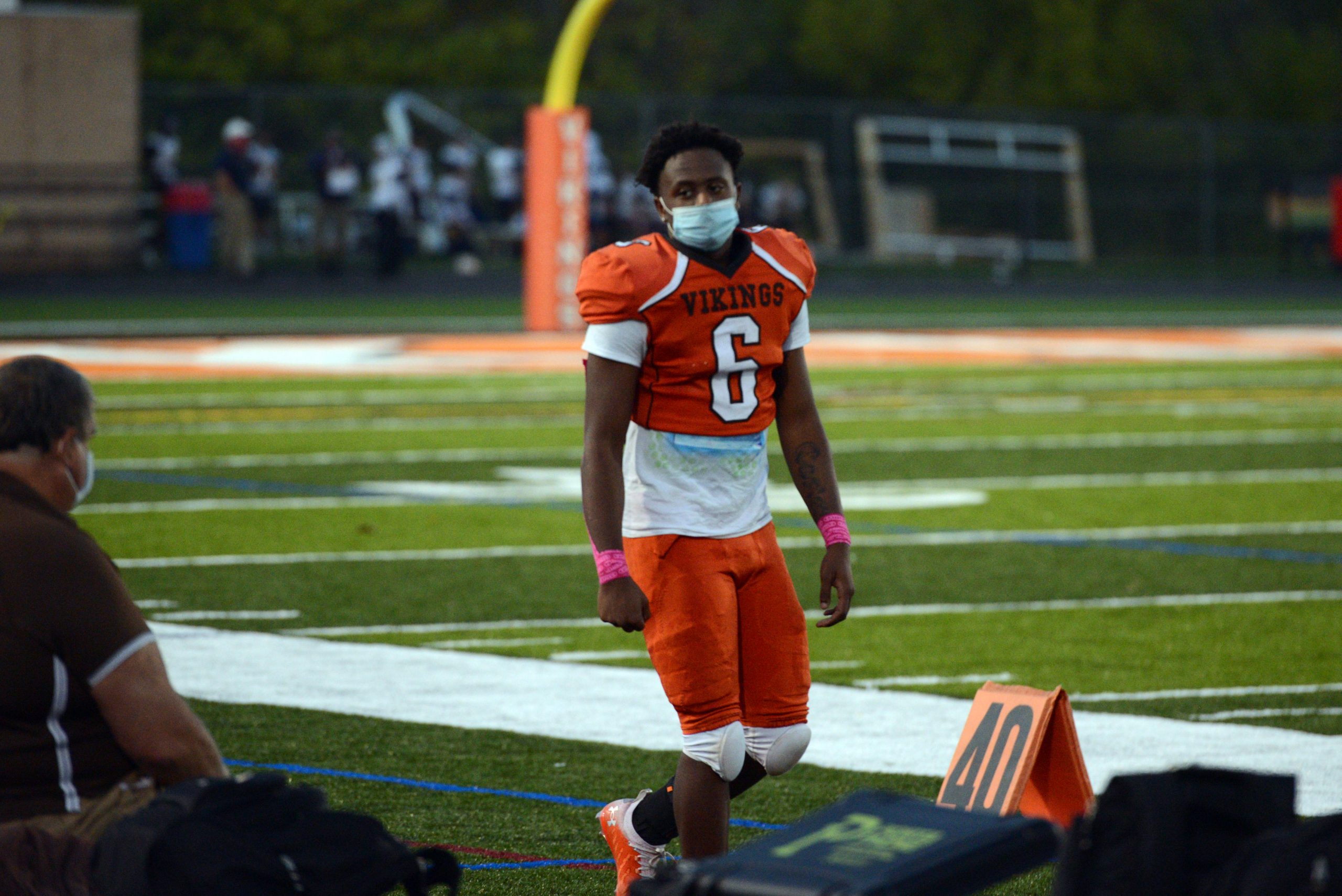
Team Bonding
During Senior Day festivities, athletes often remark that their best memories weren’t the ones made on the field but rather other moments that took place during their careers.
COVID restrictions and virtual learning limited some of those traditional experiences this season or even everyday encounters in the hallway.
Camaraderie among the upperclassmen certainly carried over from years past, but opportunities to build that with new members to the team were missing this fall.
“It was hard to get to know some of the younger guys,” Stevenson said. “I wouldn’t get to see them that much, even during school or anything to be able to talk to them. We weren’t really able to make that great of connections with them.
“And that’s one of the best things about being a senior is that you’re able to talk to some of the younger guys, get to know them and hand the reins down to them. We didn’t really get much of that this season.”
Teams weren’t able to meet up as a big group away from the field with COVID-19 social distancing guidelines in place.
Pasta parties, team breakfasts and team sleepovers are some of the off-field group bonding activities that were missing this fall.
“We had a hard time, especially all the seniors who wanted to make it fun,” Smolij said. “We wanted to try and make team bonding experiences, but we missed out on a lot. … That was really hard on a lot of us because we didn’t realize last year that was going to be the last time we were going to have those experiences.”
In lieu of some of those traditional experiences, student-athletes found other ways to take advantage of the limited time they had with each other.
Pope John Paul II volleyball players helped each other with homework and college essays before and after practice when possible or during the junior varsity games.
Martin said he and his teammates tried to go out of their way to reach out to some of their younger teammates, whether that be a quick conversation before practice or inviting them to grab a bite to eat.
He said without being able to see each other in school or hang out in big groups in their spare time, there’s been an added appreciation for the little time they do spend together.
“This is my last year of high school football. This is my last year of high school,” Martin said. “Any moment I can get with my brothers, I’m going to take it. I cherish every single moment I can.”
“It’s the little things that build the team together,” he added. “Anything we can get, we take.”
Showing their spirit on Game Day was another big aspect missing from team’s this season. In traditional years many players wore their jerseys to school or some type of other spirit wear.
Without many of their teammates in class on game days, OJR players found new ways to show their game day spirit and build team pride.
“On the day of the game, we always tried to stay in contact,” Smolij said. “We had a group chat we all talked in and then on the days before a game at practice — usually the day we’re in school for a game we do a spirit day — and we did it in practice the day before just to try to get everybody excited for the next day.”
Lessons Learned
A summer full of worrying about whether they would even get a chance to get on the field or face the same fate of last spring’s seniors prepped student-athletes for the worst prior to the start of the fall season.
The opportunity to get on the field — particularly after watching peers in the spring not get the same chance — altered many student-athlete’s perspectives this fall.
“We didn’t take it for granted this season,” Stevenson said. “We all said this. It was just nice to finally have something that we could all look forward to that was normal like other years. Nothing this year has been normal. It was good to finally have something back like that.”
“We fought for this and this is what we got,” Grinstead said. “All our seniors were appreciative of it.”
Despite the differences and challenges of the 2020 fall season, student-athletes said they learned a lot about themselves and their teammates this year.
“It’s definitely making you more accountable because there’s no one watching you 24/7,” Martin said.
Adapting to new learning methods, safety guidelines and everything else that was different this fall, including a shortened season for some, proved difficult but was taken in stride.
“Adjusting our mindset was a huge thing for this season because we usually start in early August, so we have a lot of time to improve and work on the basics,” Tulli said. “This year, we kind of just jumped right in and had to adjust because our season was crammed into eight games in the span of two weeks, which was difficult. We had to get our heads on right and realize this was the reality of our season and we had to be serious about it.”
Knowing that their experiences were shared was another way teams came together amid the difficult circumstances.
“I was really happy with how respectful all my teammates were with the mask wearing, following protocols,” Mowery said. “Everyone was so open to it and very respectful and flexible. … Everyone just wanted to play, so they’d do what it takes to play. I thought that was just nice to see and made everything a little bit more easy going and not too stressful.
“Everyone was on the same page. Everyone was struggling with the same stuff, so that was kind of good. It sucks that it’s happening, but everyone knows that we’re all in this together, which was just a way to keep us connected.”
